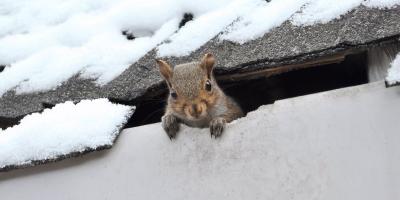Precious Puddles – Vernal Pools in Your Backyard

What are vernal pools? How do they form?
‘Vernal’ is Latin for ‘of the spring’, the time of year when snow melts and water collects in low lying areas forming temporary pools. Some of these depressions may also fill in during the autumn before winter gets underway. But in contrast to other surface water, these shallow pools dry out in summer and lack communication (inlet and outlets) with other water bodies. Therefore, vernal pools cannot support fish, and fish cannot migrate to them. With no fish to eat eggs and immature stages (tadpoles & salamander larvae), make vernal pools great nurseries.
Due to their isolation and lack of predators, vernal pools play host to several specialized and even some endangered species. They are the primary breeding site for wood frogs, spotted, blue-spotted, and four-toed salamanders, and fairy shrimp. And are critical habitats for endangered species like Blanding’s turtle and the ringed boghaunter dragonfly.
The spawn, juveniles, and adults of frogs, toads, and salamanders are food for skunks, weasels and even bears. Temporary pools green up earlier in spring providing fresh leaves and shoots for deer and moose. After maturing and departing their birthplaces, frogs, toads, and salamanders are still hunted by hungry mammals and other animals. Wood frogs and other amphibians may migrate 1000 feet or more from their native ponds ensuring the spread of nutrients from these hotbeds to the surrounding forest.
Vernal pool myths:
There are many myths about vernal pools. Here are a few:
- Vernal pools saturate soils and flood basements. FALSE. Vernal pools (as well as other wetlands) are one of our front-line defenses against flooding. They divert and store water and sediments instead of dumping stormwater into rivers and streams. And, in doing so, recharge groundwater reserves and purify storm runoff.
- These temporary bodies of water are unnatural and caused by disturbance of natural drainage patterns. FALSE. As pointed out above, water bodies that lack inlets and outlets and dry up in summer cannot support fish. Therefore, they serve as highly productive havens/nurseries for amphibians and other animals – a role they’ve played at least as long as the retreat of our glaciers, 16,000-17,000 years ago.
- Water retained by vernal pools is polluted. FALSE. These temporary water bodies filter out pollutants and remove/detoxify contaminants.
- Public health pests, like mosquitoes, breed in vernal pools. False. Some mosquitoes breed in vernal pools but these either do not feed on humans or are not vectors of diseases. Mosquito larvae play an essential role in pool food chain by converting microscopic organisms into food for tadpoles, salamander larvae, and many other animals. In fact, this intense nutrient exchange and predation is another reason why vernal pools are not considered important mosquito breeding grounds.
- Vernal pools threaten basements of homes and businesses and decrease their value. False. These basins of water are short-lived (ephemeral) and have been shown to increase home values. They are enjoyed and promoted by informed homeowners for the environmental, aesthetic, and wildlife value they provide.
What you can do to help:
Currently, there is no federal protection for vernal pools unless that water supports endangered species. Amphibians suffer alarming losses on our roadways each year and frogs and salamanders are important indicators of environmental quality.
Here are some things you can do:
- Get facts, don’t forge ahead blindly. You should not be overly concerned about the myths listed above and opinions of those less informed. The benefits vernal pools provide greatly outweigh their perceived downsides.
- Don’t disturb these areas (drain/pump water out, compact soils, reduce tree canopy or other vegetation, etc.); instead look to improve them (create a vernal pool management plan).
- Extend this protection out 200 feet from the high-water mark. Don’t run heavy machinery here or across pool depressions (even when dry).
- Maintain 50-75% tree canopy cover – avoid tree cutting. Maintain understory and restore forest corridors. Vegetation management plans for restoring/improving vernal pool habitats are available from state offices, departments of conservation, or fish and game.
- Restrict soil disturbance to winter (Nov 1 to Jan 31). Don’t fertilize lawns in or near this zone and control erosion.
- Whenever possible, restore forest corridors to link your temporary water bodies with others nearby.
- Participate in “salamander meanders” and other educational and rescue activities in your town/area. This will help you meet and promote the wildlife you are preserving.
Environmental Improvement is Everyone’s Responsibility:
Protecting critical habitats and improving environmental awareness by acting responsibly should be everyone’s goal. At JP Pest Services, we are committed to protecting our environment while providing services to protect human health, pets, livestock, and property. We accomplish this mission by using Integrated Pest Management practices, in other words, the selection and use of pesticides is only part of a comprehensive control plan and only used when deemed necessary to reduce or eliminate the impact of a pest infestation. Additionally, JP uses EPA Reduced Risk pesticide materials whenever they are available and labelled for the pest we are managing. Click here to read more about IPM.
If you want additional information regarding vernal pool management, refer to these links:
Additional Resources for Vernal Pools
- Anyone interested in learning more about or locating vernal pools in their area can get detailed guidance from guidance from the guide, Identification and Documentation of Vernal Pools in New Hampshire (Third Edition)." https://www.wildlife.state.nh.us/nongame/documents/vernal-pool-manual.pdf
- NH Wildlife Action Plan habitat profile for Vernal Pools, including information about the condition and location of this habitat, the threats facing this habitat, and conservation actions recommended by biologists to protect vernal pools in New Hampshire.
- Wetlands Assessment - Click on the following link to download (or order) the UNH Cooperative Extension publication, "The Importance of Hydroperiod in Wetlands Assessment," a technical publication for wetland scientists and public decision-makers interested in assessing the habitat value of various wetlands (at left).



